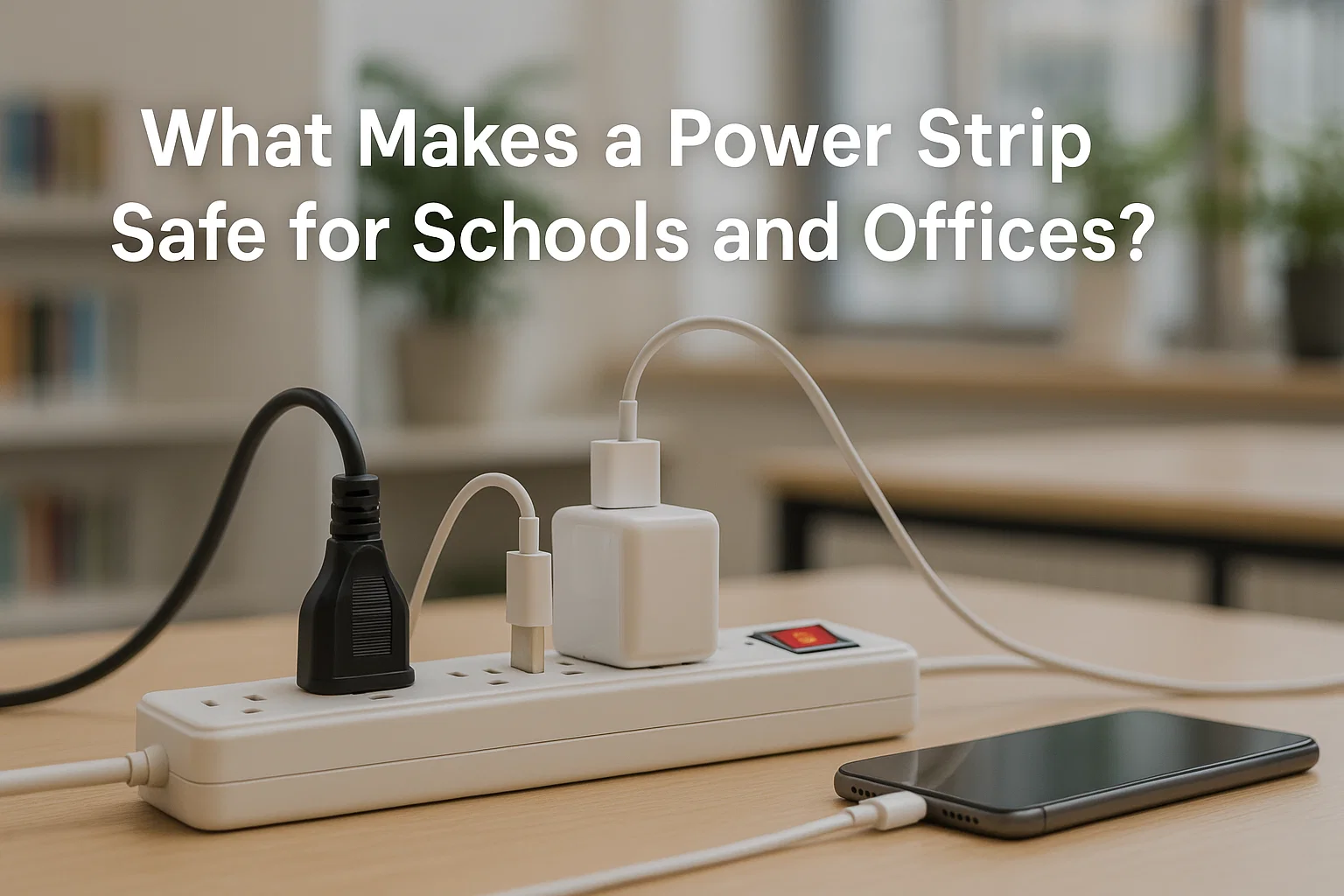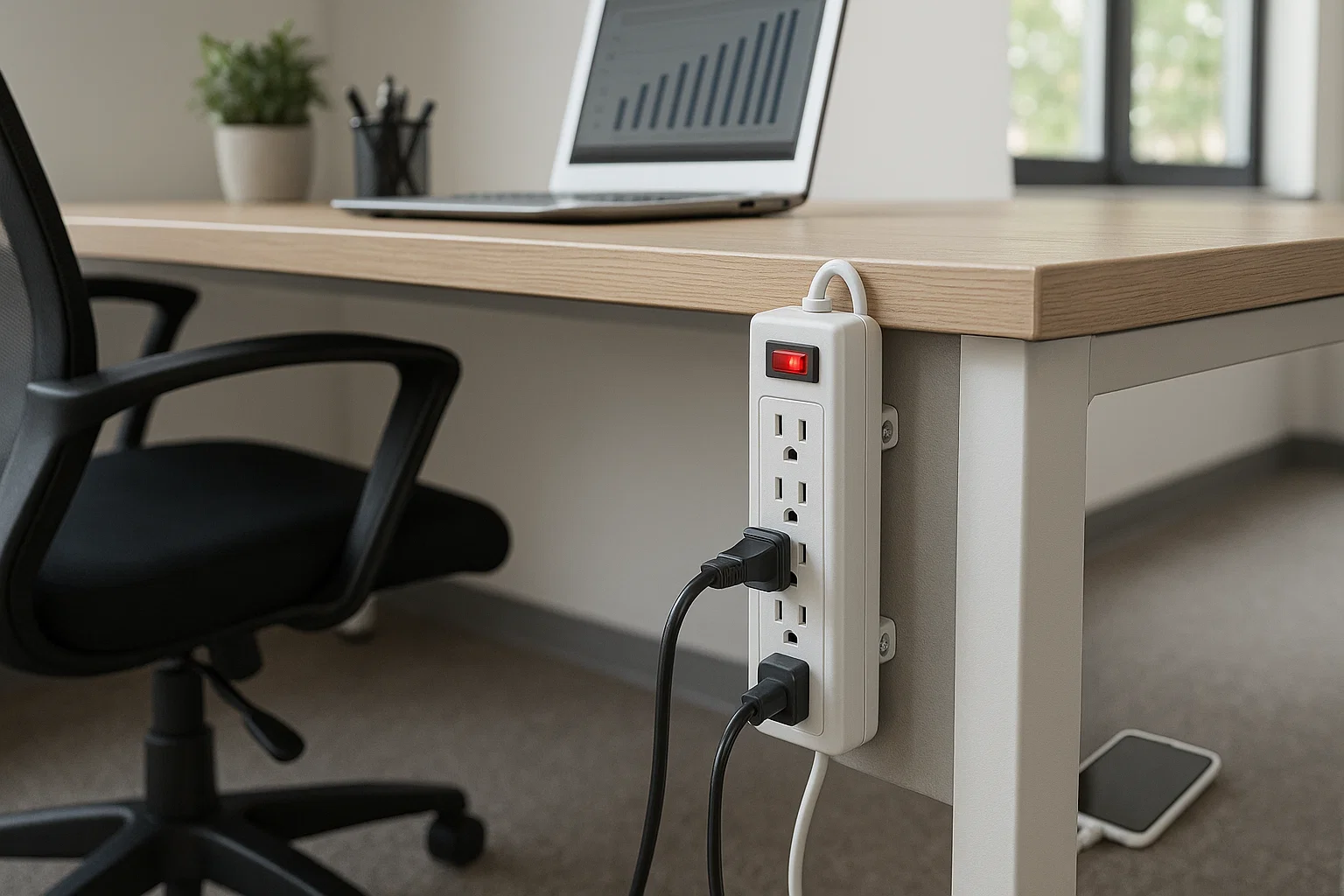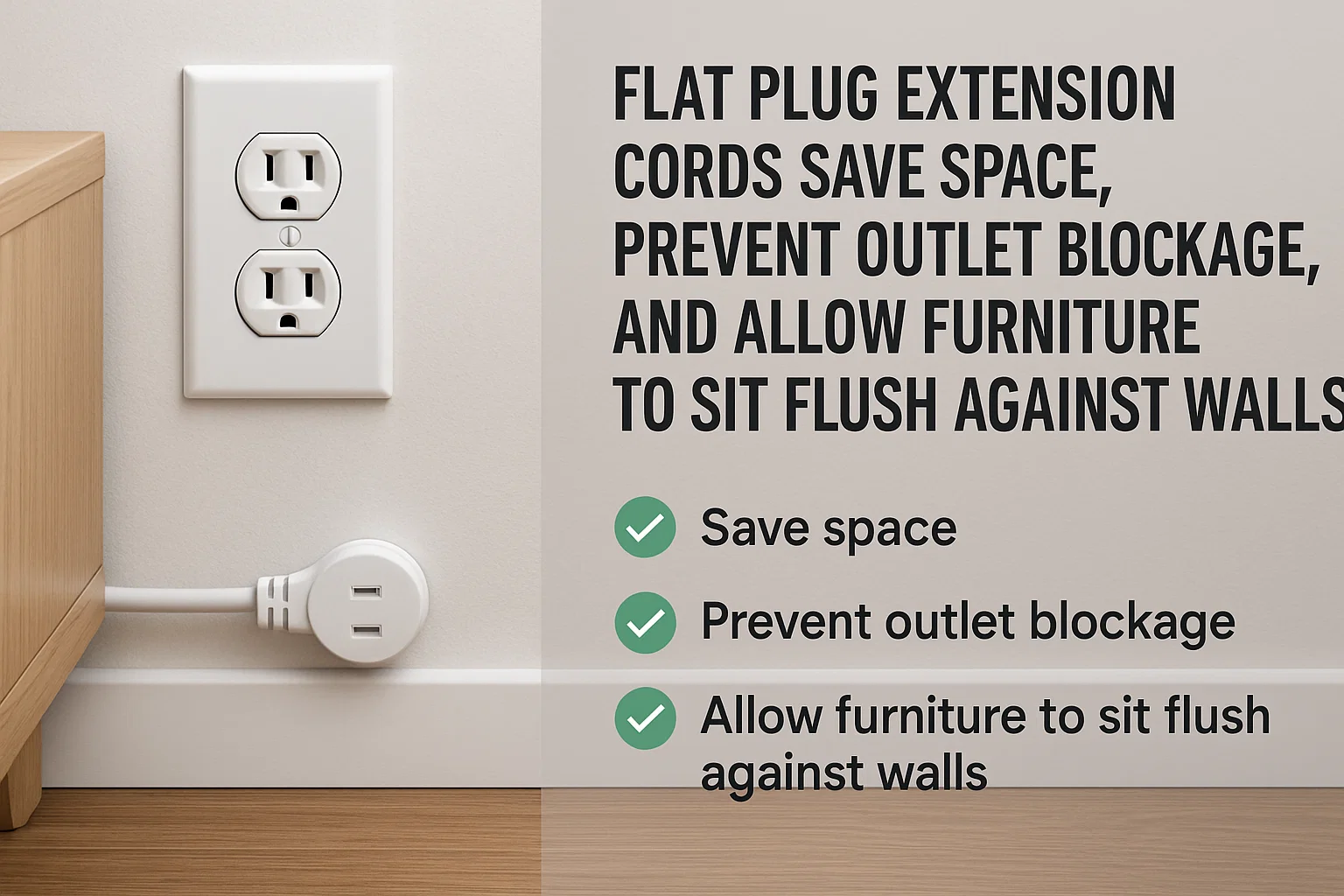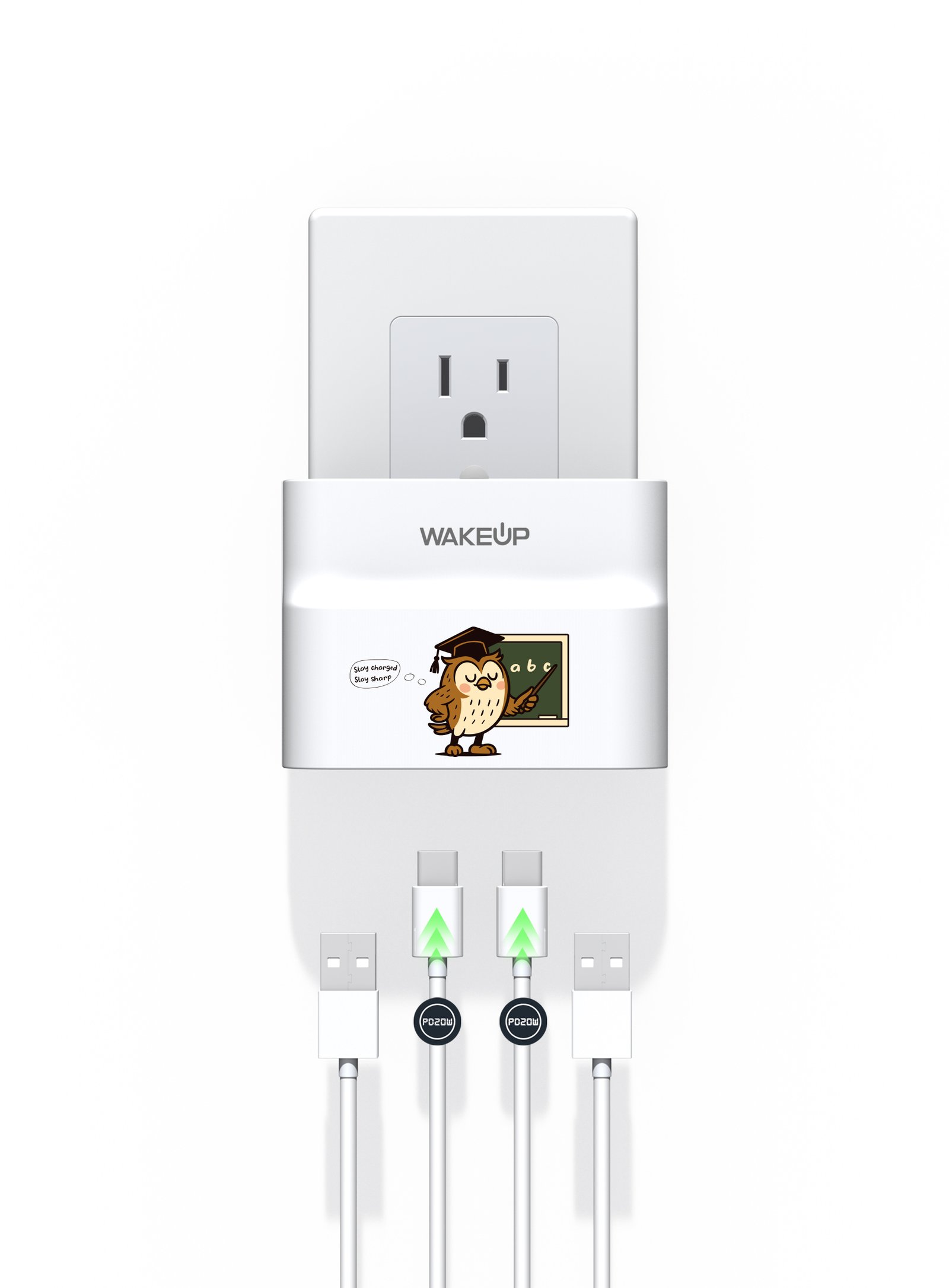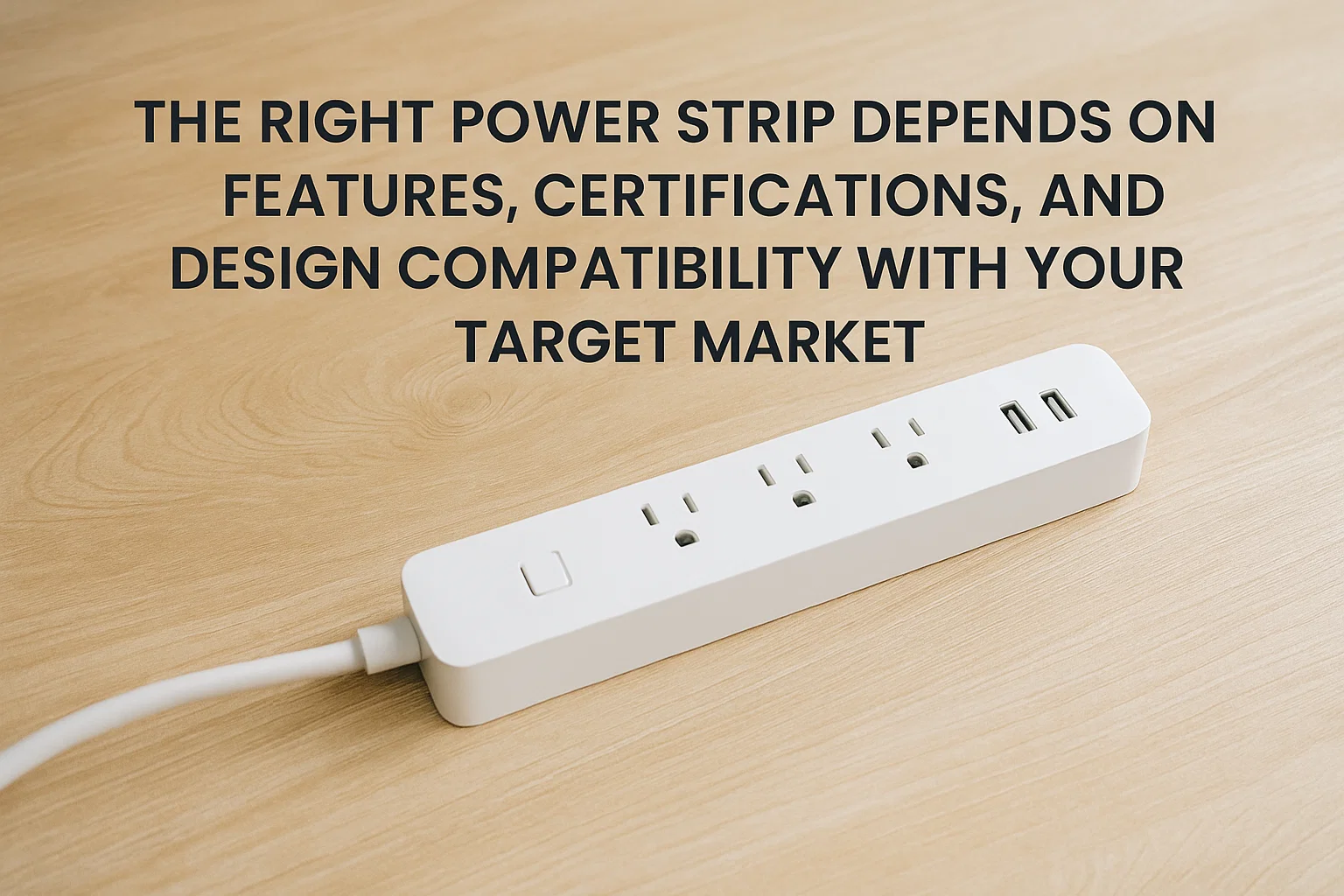
Problem: Kitchens today need more power than ever.
Agitation: Standard power strips often fail under heavy kitchen use.
Solution: Choosing the right power strip ensures safety, convenience, and performance.
Kitchen power strips must support high wattage, resist moisture, and fit bulky appliances while maintaining safety compliance.
Let’s explore the key factors that every buyer should consider before sourcing.
Why do kitchens need special power strips?
Problem: Kitchens have more high-power devices than other rooms.
Agitation: Standard strips cannot handle the load safely.
Solution: Kitchen power strips must support higher wattage and safer materials.
Kitchen strips are designed to handle heavy-duty appliances and provide extra safety against moisture and heat.
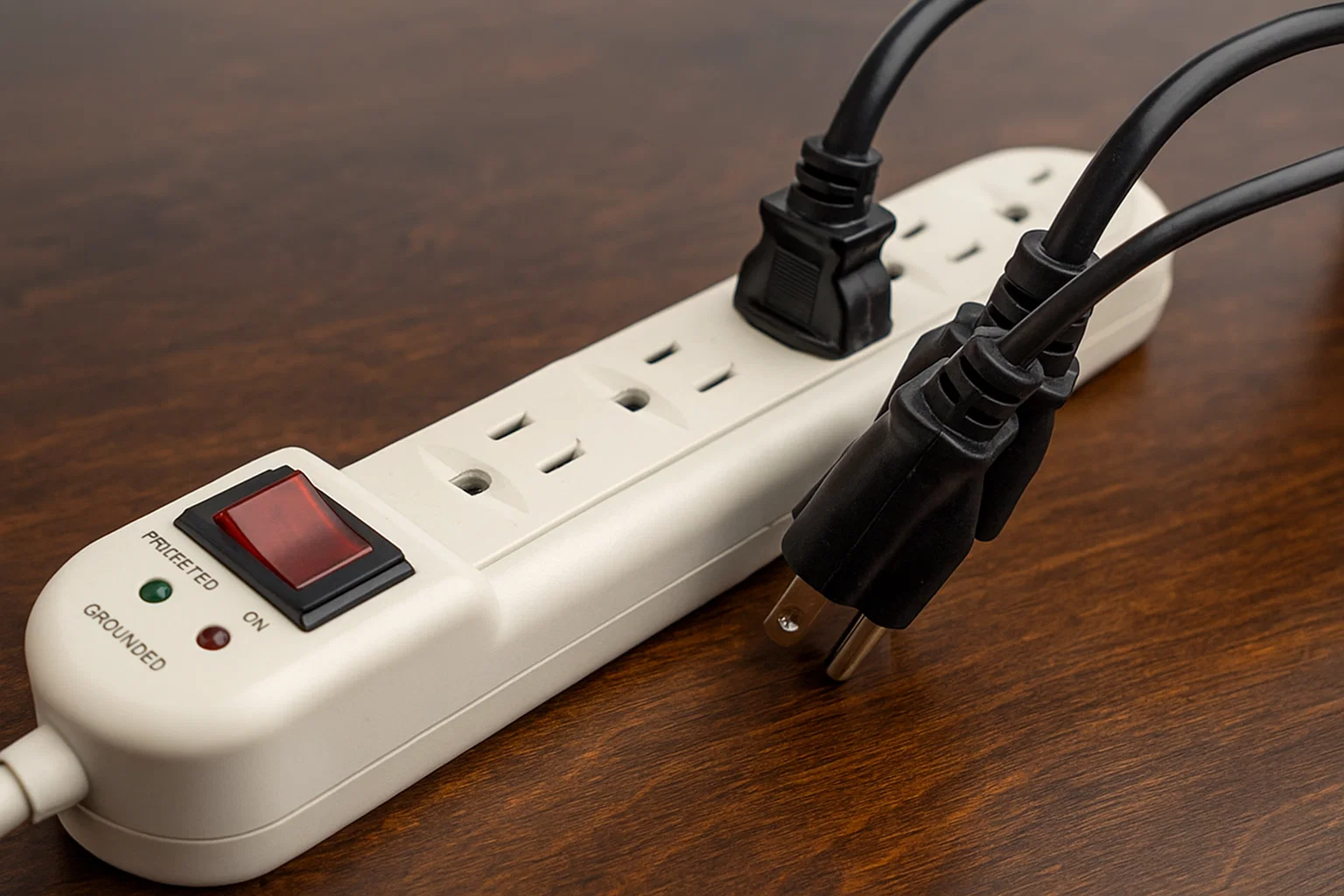
Dive Deeper: Kitchen vs standard requirements
A living room strip powers TVs or laptops. A kitchen strip powers coffee machines, blenders, and air fryers. These devices require more current. A typical blender can draw 500–700 watts, while an air fryer can exceed 1,500 watts. If a strip is not built for this, it may overheat or trip.
Our Retro Metal Shell power station with 3 outlets is built for this. With 14AWG cable and a flat plug design, it handles heavier loads while saving space behind kitchen counters.
Kitchen vs Standard Power Strip:
| Feature | Standard Power Strip | Kitchen Power Strip |
|---|---|---|
| Wattage support | ~1200W | 1800W–2500W |
| Material | ABS plastic | Heat-resistant Metal |
| Protection | Basic surge only | Surge + overload breaker |
| Spacing | Narrow | Wide-spaced sockets |
What safety features are essential in kitchen power strips?
Problem: Kitchens are humid and prone to spills.
Agitation: Without safety features, shocks and fires are possible.
Solution: Buyers should prioritize certified safety functions.
Essential features include surge protection, overload protection, grounded outlets, and durable casings.

Dive Deeper: Kitchen safety priorities
Kitchens pose unique risks: steam, splashes, and grease. That’s why high-quality kitchen strips are designed with fire-retardant housings and certifications.
Our Retro Metal Shell housing resists heat and moisture far better than plastic housings. It also integrates 450J surge protection, ensuring safety even when heavy appliances start at the same time.
Key safety features buyers should demand:
| Feature | Purpose |
|---|---|
| Overload protection | Cuts off power when load is too high |
| Surge protection | Shields appliances from voltage spikes |
| Grounding | Reduces shock risk |
| Metal housing | Withstands heat and splashes |
Why is outlet spacing important in kitchen use?
Problem: Kitchen appliances often come with bulky plugs.
Agitation: Standard spacing blocks adjacent outlets.
Solution: Wide-spaced outlets allow multiple appliances at once.
Wide-spaced sockets are critical to fit large adapters used by appliances like coffee machines and mixers.
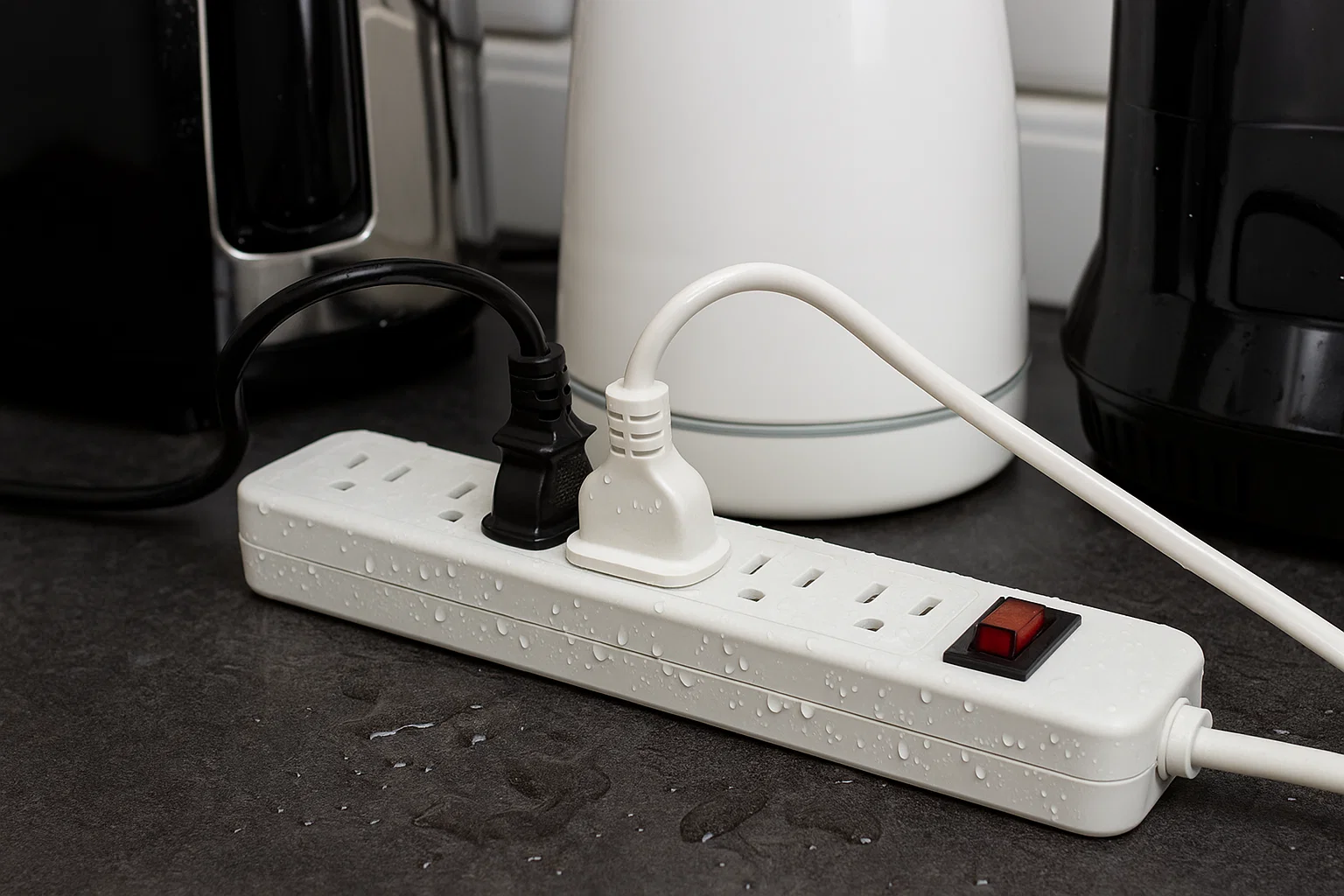
Dive Deeper: Space management in kitchens
Kitchen counters are premium real estate. A strip with narrow spacing forces users to unplug one device to use another. Wide-spaced outlets solve this problem.
Our 3-outlet Retro Metal Shell power station is built with wide sockets. Users can plug in a toaster, blender, and coffee maker without blocking other outlets.
Example spacing benefits:
| Socket type | Fits normal plugs | Fits large adapters |
|---|---|---|
| Standard | Yes | No |
| Wide-spaced | Yes | Yes |
Large-spaced sockets reduce frustration and improve usability, especially when powering multiple cooking gadgets at the same time.
Should buyers consider USB ports in kitchen strips?
Problem: Families charge phones and tablets in the kitchen.
Agitation: Using separate chargers adds clutter.
Solution: Built-in USB ports save space and increase functionality.
Kitchen strips with USB-A and USB-C ports support device charging while freeing outlets for appliances.

Dive Deeper: USB integration trends
The kitchen is often the family hub. Many households charge phones on the counter while making coffee or cooking. Including Smart IC USB ports makes strips more versatile.
Our model includes 2 USB-A + 2 USB-C normal ports or an upgraded option with USB-C PD35W fast charging. This allows families to charge phones, tablets, or even small laptops without needing adapters.
Benefits of USB integration:
| USB type | Benefit |
|---|---|
| USB-A | Standard charging for phones and accessories |
| USB-C PD | Fast charging for tablets and laptops |
For buyers, adding USB ports to kitchen-focused models is an easy way to increase product appeal without major cost increases.
How do certifications affect kitchen power strip sourcing?
Problem: Buyers face customs and retailer audits without proper documents.
Agitation: Uncertified strips lead to delays, fines, or rejections.
Solution: Certifications guarantee compliance and market acceptance.
ETL, cETL, or UL certifications are mandatory for U.S. and Canadian kitchen strips, proving safety and quality.
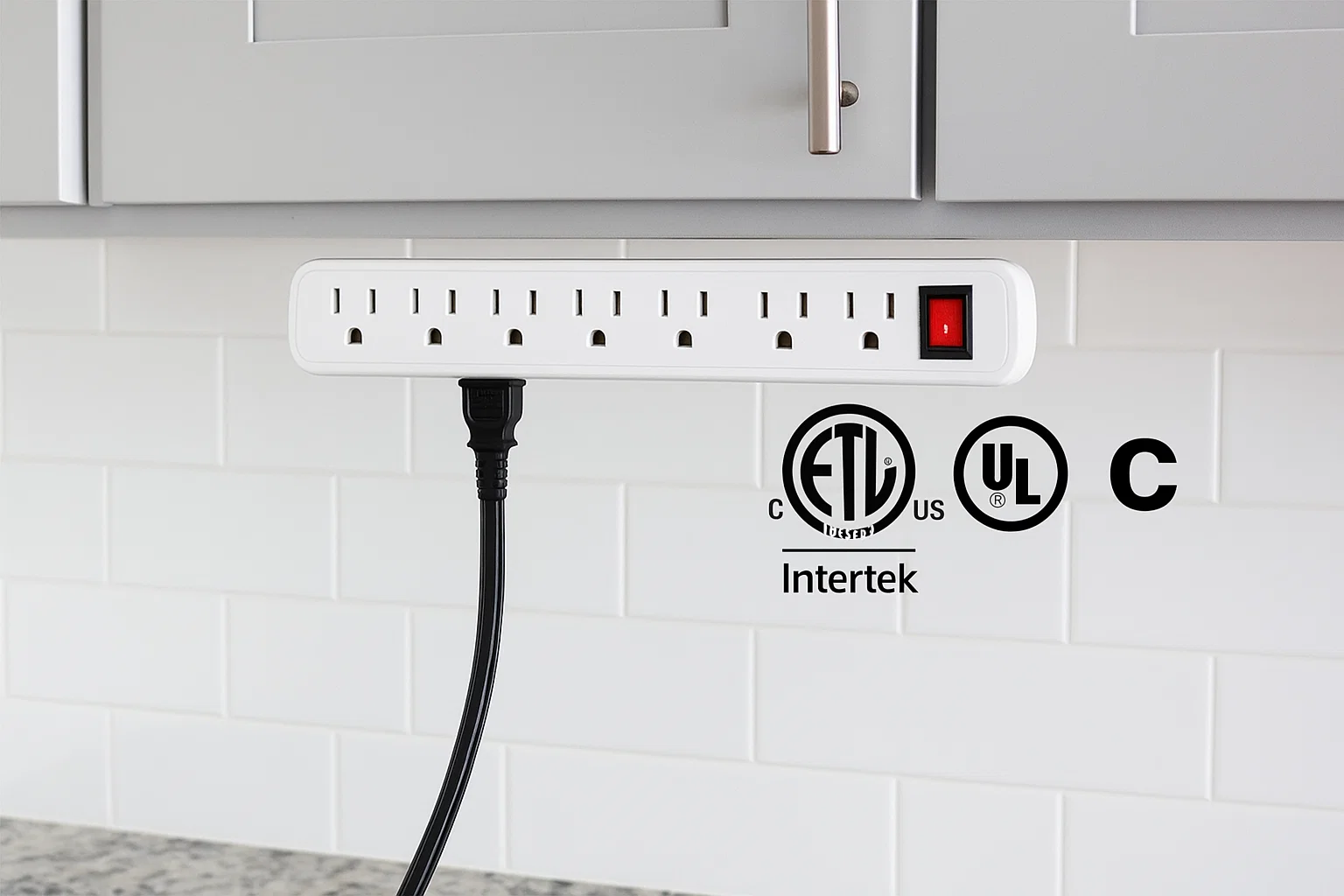
Dive Deeper: Certification as a buyer safeguard
In my own work, I’ve seen procurement officers lose entire containers because suppliers provided fake certificates. To avoid this, always verify the certification number with Intertek or UL.
Our Retro Metal Shell kitchen power station is designed to meet ETL and cETL standards, ensuring compliance in both U.S. and Canadian markets.
Certification checklist:
| Certificate | Market | Importance |
|---|---|---|
| ETL | U.S. | Required by retailers |
| cETL | Canada | Required by retailers |
| UL | U.S. | Equivalent alternative |
Choosing certified products reduces liability and builds trust with retailers.
Conclusion
Kitchen power strips must handle high wattage, wide spacing, USB ports, metal housing, and certifications to ensure safe and practical use.


